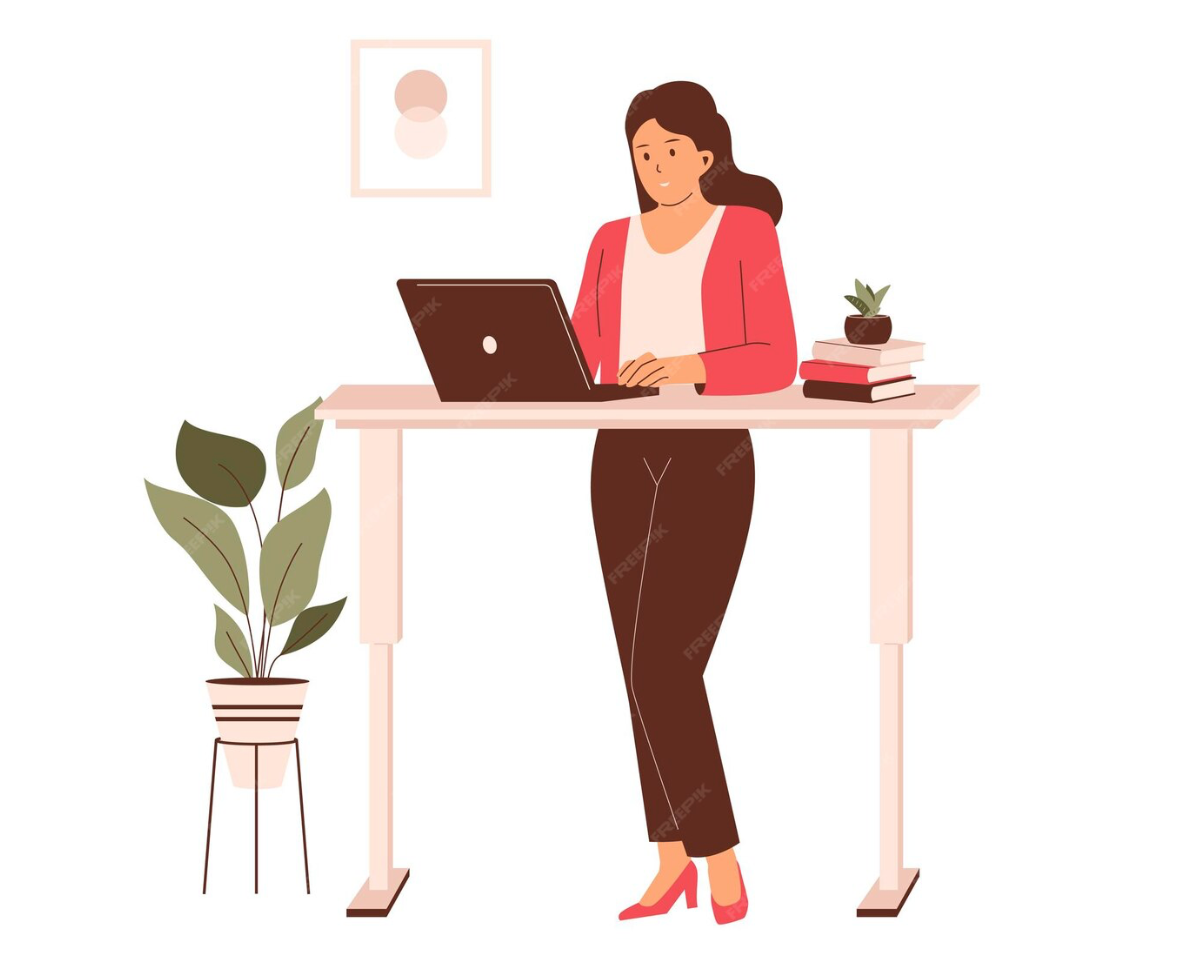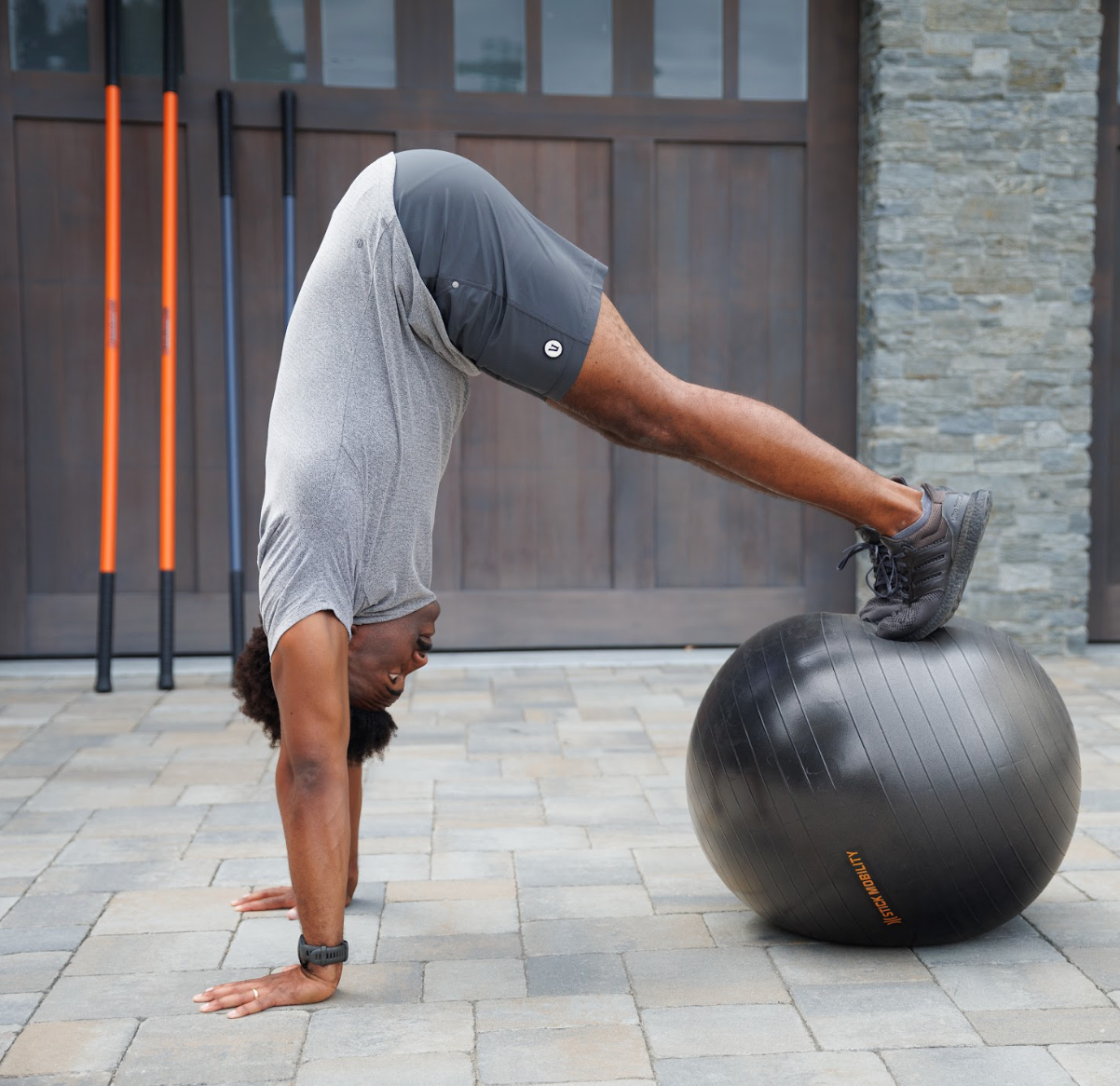If you’re feeling stiff and uncomfortable while working at your job, there are exercises and best practices that can leave you feeling refreshed. Work-related disorders aren’t just limited to manufacturing, construction, and other industrial jobs. They occur in all places, including office spaces and working from home. Research shows that repetitive motion, poor posture, and staying in the same position for prolonged periods can cause or worsen musculoskeletal disorders.
A review of global job trends over the past 50 years highlights that at least 8 in 10 workers spend the majority of their day sitting. This lifestyle can contribute to a variety of health issues, including:
- Neck and shoulder pain
- Obesity
- Musculoskeletal disorders
- Stress
- Lower back pain
- Carpal tunnel syndrome
Furthermore, a systematic review published in the American Journal of Preventive Medicine examined the associations between occupational sitting and various health risks. The review found that prolonged occupational sitting is associated with an increased risk of diabetes mellitus and mortality. PubMed
These findings underscore the importance of incorporating regular movement and reducing sedentary time to mitigate health risks associated with prolonged sitting.
Why Movement Matters
The good news is that movement and mobility work can be built into your daily routine. It can become routine. Research suggests that periodic workplace stretching may reduce pain by up to 72%. Additionally, short sessions of physical activity throughout the workday have been shown to relieve both physical and mental stress. Studies also indicate that taking rest breaks and incorporating movement into your daily routine does not compromise productivity; in fact, it may enhance it.
According to The Harvard School of Public Health, physical activity, even for short periods can improve your mood. Consider incorporating movement into your workday with habits like:
- Standing up while on the phone
- Using a flexible standing desk to change positions
- Walking during meetings when possible
- Taking short breaks to move every hour
The key is to change positions frequently throughout the day to avoid repetitive strains. Below are four effective Stick Mobility exercises to help improve posture and mobility for desk workers.
1. Human Sail
This exercise helps open up the anterior tissues and reverses the dominant flexion most desk workers experience.
How to Do It:
- Stand with your feet about shoulder-width apart.
- Hold the Training Sticks at the top grips and drive them down into the ground to engage your lats.
- Squeeze your glutes and drive them forward to open up the hips.
- Simultaneously pull your arms back to stretch your anterior tissue line and front arm lines.
- Once fully extended, pull your wrists into extension to deepen the stretch.
Tips: Maintain steady breathing and engage your glutes throughout. Avoid arching the lower back.
Common Mistakes: Keeping the head forward—allow it to follow the body’s opening movement.
2. Bow & Arrow
This movement increases lateral range of motion and strengthens the back, shoulders, and hips.
How to Do It:
- Stand with your feet shoulder-width apart and position the Training Stick at 3 o’clock, about 10-12 inches from your midfoot.
- Grip the stick with your bottom hand around waist level, and your top hand reaching over with the palm facing forward.
- Keep your hips square and press the stick into the ground at ~30% effort.
- Push your hips in the opposite direction of the stick for a passive stretch.
- Activate the stretch by pushing the stick away from you with the bottom hand while keeping both arms extended.
- Hold for 10-20 seconds, perform three reps, then switch sides.
Tips: If standing is challenging, place the stick against a wall for support.
Common Mistakes: Over-bending the stick—focus on controlled tension instead of excessive flexing.
3. Slap Shot
This exercise improves thoracic and cervical spine mobility while targeting the chest, lateral hips, and scapula.
How to Do It:
- Stand with a wide stance and place the Training Stick across your lower back.
- Keeping the stick in place, hinge at the hips.
- Without shifting your weight, bring one end of the stick down across your body toward the midline.
- Once at your end range, plant the stick on the ground.
- Hold for 6-10 seconds while pulling apart on the stick at ~30% effort.
- Perform 2-3 lunges per side, holding each for 6-10 seconds.
Tips: Complete the sequence twice per side for improved range of motion. If needed, use an elevated platform for support.
Common Mistakes: Using hip compensation instead of focusing on rotational capacity.
4. Monkey Hang (Options: Kneeling, Standing, Split Stance)
This movement stretches the hips, chest, and lats while enhancing shoulder mobility.
How to Do It:
- Begin with your feet about shoulder width apart.
- Place the Training Sticks at 3 and 9 o’clock, gripping near the tops with straight elbows.
- Lower your hips backward toward your heels.
- Hold a passive stretch for 20 seconds.
- Ease off tension, rest, and then push the sticks into the floor at ~30% effort for another 20 seconds.
- For the final round, rotate the sticks right and left, holding each position for 6-10 seconds. Perform 2-3 reps in each direction.
Tips: Use a pad for support if kneeling. To progress, perform in a split stance.
Common Mistakes: Turning the hips—focus on keeping them square for a full stretch.
Final Thoughts: Build the Habit of Movement
For desk workers and professionals, mobility work is an essential practice for long-term health and productivity. By integrating these exercises into your routine, you can improve posture, reduce discomfort, and feel more energized throughout the day.
Remember, the best way to counteract the negative effects of prolonged sitting is to move often. Set reminders, build movement into your workflow, and make posture awareness a priority. Stick Mobility exercises provide an accessible and effective way to reset your body and keep you performing at your best. For additional blogs, see HERE.


